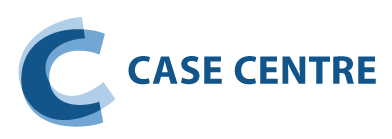


- Not connected
- |
- Login

Cas Money Cash Flow inc. : L’analytique RH appliquée aux enjeux de rétention et de bien-être au travail (A et B) (Le)
Money Cash Flow Inc.: HR Analytics Applied to Employee Retention and Well-Being Issues (A and B)

- French,
- English
- Roulement du personnel,
- Engagement,
- Satisfaction,
- Indicateurs,
- Tableau de bord
- Employee turnover,
- Commitment,
- Satisfaction,
- Indicators,
- Dashboard
Ce cas analytique en deux parties illustre la situation de Money Cash Flow inc., compagnie d’assurances canadienne en pleine croissance, où la gestion des ressources humaines de son centre d’appels de Montréal est graduellement devenue une préoccupation majeure. À la suite de nombreuses plaintes de la clientèle, puis du nombre croissant de départs des employés, les dirigeants de l’organisation désirent remédier à la situation et remettre l’entreprise sur pied. Avoir un personnel stable et dévoué représente un élément important de la mission de l’organisation. En effet, les dirigeants reconnaissent que le capital humain constitue la source principale de la valeur ajoutée ainsi qu’un avantage stratégique au sein de l’industrie.
This two-part analytical case illustrates the situation of Money Cash Flow Inc., a fast-growing Canadian insurance company, where the human resources management at its Montreal call centre has gradually become a major concern. In view of the many customer complaints and the growing number of employee departures, senior management wants to correct the situation and get the company back on an even keel. A stable and committed workforce is an important factor in the company’s success. Management recognizes that human capital is the main source of its value added and a strategic advantage in its industry.
- Banking and financial services
- Analytique RH
- Roulement du personnel
- Bien-être
- Motivation
- Analyses quantitatives
- HR analytics
- Employee turnover
- Employee well-being
- Employee motivation
- Quantitative analyses
- Comprendre la complexité d’un projet d’analytique RH, lequel se positionne dans un contexte d’affaires précis, et développer une compréhension systémique d’enjeux RH (rétention et bien-être du personnel).
- Développer les capacités à cerner et à analyser les informations les plus pertinentes dans l’élaboration d’un tel projet, tant sur le plan des enjeux d’affaires que sur celui des enjeux en matière de gestion des ressources humaines (GRH) qui s’y rattachent.
- Se familiariser avec différents outils statistiques afin de documenter un enjeu de gestion des ressources humaines.
- Prendre conscience de l’importance de mesurer les résultats de la GRH pour alimenter la réflexion et les plans d’action des gestionnaires responsables de la gestion du capital humain.
- Understand the complexity of an HR analytics study, in a specific business context, and develop a systemic understanding of HR issues (employee retention and well-being).
- Develop the ability to identify and analyze the most relevant information in developing such a study, in terms of both business issues and the related human resources management (HRM) issues.
- Become familiar with different statistical tools used in documenting human resources management issues.
- Become aware of the importance of measuring HRM results to contribute to thinking and action plans by managers responsible for managing human capital.
- Roulement
- Bien-être
- Motivation
- Attitudes
- Théorie de l’action raisonnée
- Comportement organisationnel


